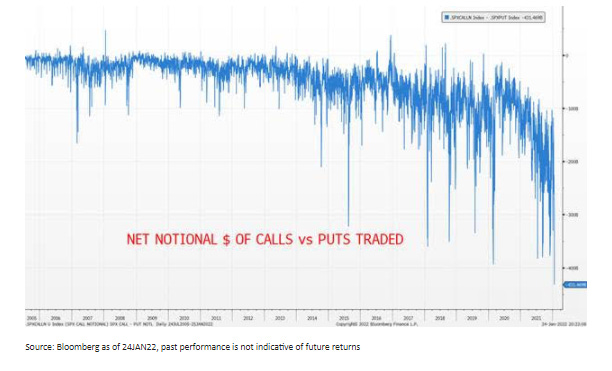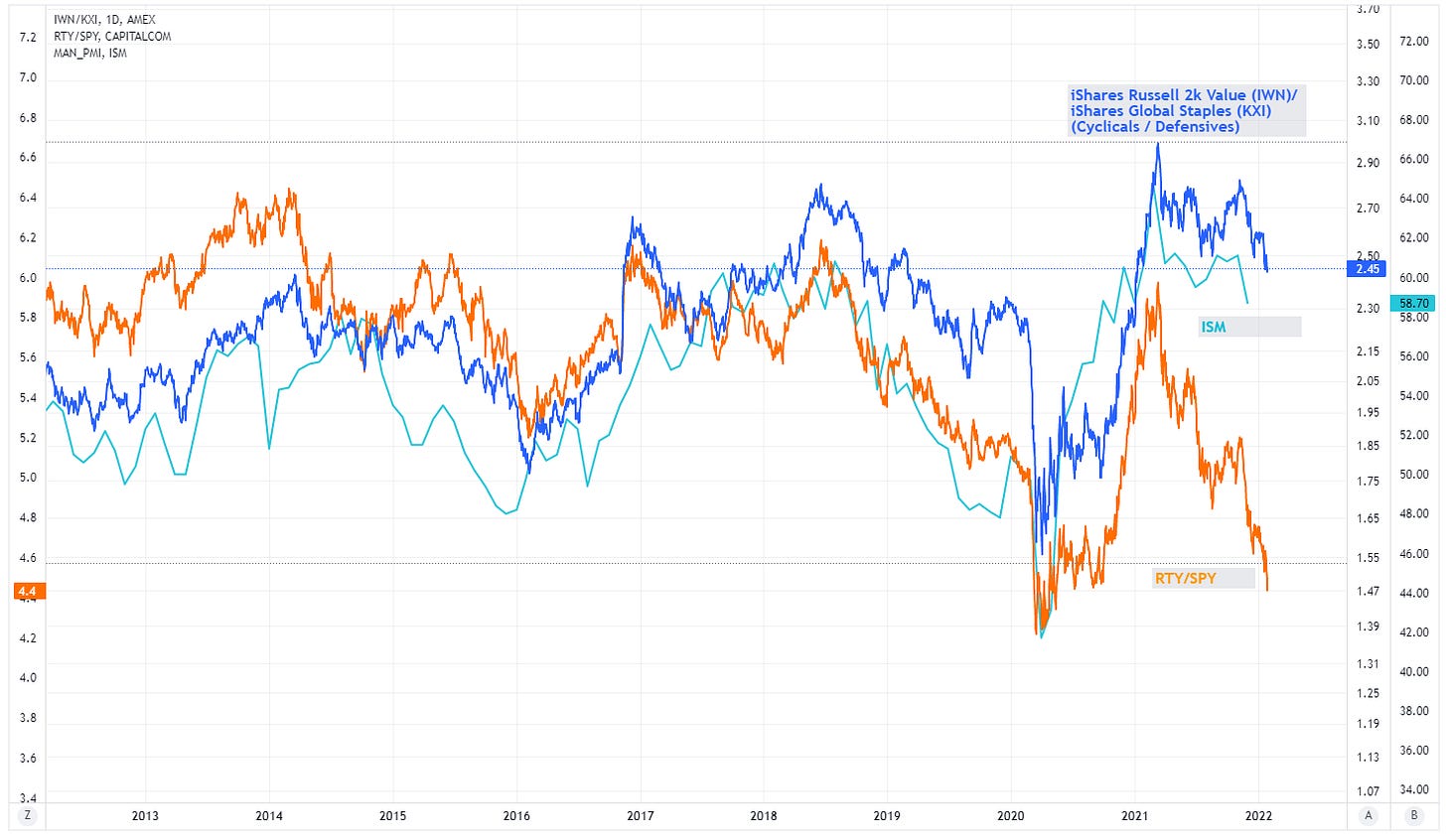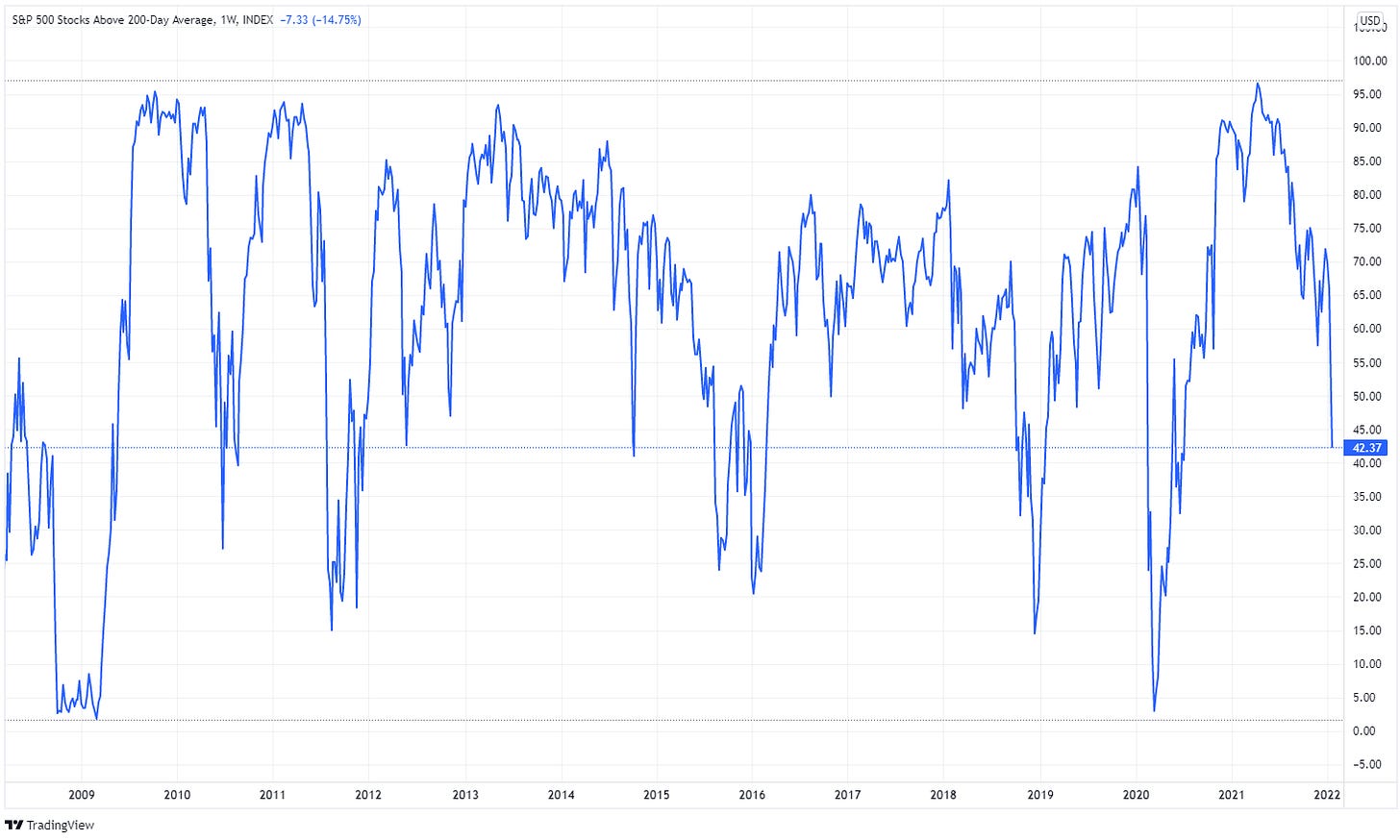On today’s post:
- Weird week
- FED put is still there
- Don’t be a hero
- Better Buy Oil
- Place your bets
- Portfolio (PRO Content)
- What Am I Doing? (PRO Content)
- Rates in Brazil and the $BRL (PRO Content)
- Stone ($STNE) (PRO Content)
Weird Week
Monday wasn’t a typical day. Write this down. It was the 6th time that Nasdaq reversed a +4% intraday drop to a close high (since 1990). On all occasions, the forward return for the next three months was negative.
Liquidity remained low while options trading exploded. On Monday, we saw the most significant amount of options traded EVER, with the highest put notional minus call notional EVER.

The feeling is that someone (probably retail investors) discovered put options. Bonanza time is gone. The FED has transitioned from an easing campaign to a tightening one, meaning that the market will be setting new levels.
FED put is still there
The first tool the FED implement when looking for tightening or easing conditions is communication. The forward guidance helps the market to adjust to coming actions and gives the FED an answer if the guided steps are appropriate or not.
The market has been telling the FED that actions guided were insufficient, and communication should get more challenging. And, on Wednesday, they delivered just that.
FED suggested that near-term risk increased, and prices should adjust to that given the uncertain path ahead, indicating consecutive hikes ahead.
Chair Powell clarified that FED’s job isn’t to set a floor to stock prices — the so-called FED Put. The problem is that, historically, FED’s decisions are — indeed— influenced by stock prices and volatility.
Don’t be a hero
As on last week's post, when the S&P 500 lost the 200ma, volatility (fear) increased sharply. With the VIX above 25, fundamentals lose importance, and market participants are more price action-driven, playing macro thematic instead of specific fundamentals.
However, history plays with the bulls unless we see an economic recession. Most people cannot understand that you can only participate in a bull market if you survive the bear.
Perhaps, this isn’t a good year for leverage or to hold companies with a poor unproven operational track record. But, the less you lose today, the more you will make in the future.
Better Buy Oil
A new report from Morgan Stanley evaluated O&G companies respective to their historical valuation. It’s worth mentioning that, according to their estimates, the sector is pricing WTI at $62/bbl, well below the forward curve at $80/bbl.

I think that looking for an exit price for the Oil trade is premature. I don’t believe that Oil Companies will outperform the S&P 500 in the next decade, but every commodity cycle comes with an overshoot in prices. We haven’t seen that in Oil yet.
However, the best way to leverage a commodity cycle is through equity. Unlike the physical asset, a company has operational leverage, offering excellent returns if the rotation trade is right.
Place your bets
There was an incredible flow from investors migrating from defensive and cyclical stocks to secular growth in the past decade.
However, since investors became more skeptical about the tightening cycle and the FED suggested they were serious about fighting inflation, investors dumped secular growth stocks and moved to Value stocks.
Higher inflation and resilient growth work well for Oil, but investors will be looking to play the defense game if the latter starts fading away.

With that in mind, the chart above is interesting. Historically, ISM is an excellent leading indicator for equity returns, especially for value companies. This trade works amazingly well in a sell-off scenario. Keep that in mind.
PRO Content
Portfolio
We saw a significant performance in the commodities asset we’re holding in the portfolio along the week, hedging us against significant losses from tech stocks. In addition, I believe there is an enormous opportunity in the recent acquisitions that we will discuss next.
I increased $SHOP and $MELI positions since both are exceptional businesses trading with a pretty reasonable valuation — $MELI’s post is out, so I suggest you read it.
$SHOP is a monopoly playbook. I was holding $AMZN, $GOOGL, and $FB, so it makes sense for me to have the last block of US E-commerce. It’s tough to imagine a scenario where all of them are performing operational poorly.
$SHOP pays to $GOOGL and $FB to increase sales, while its CAC has been reducing, especially in Emerging Markets, where the company is already known, and competitors don’t have a competitive solution.
I believe $SHOP is the platform, and $AMZN is the marketplace. It’s hard to imagine a better way of getting exposure to e-commerce growth in DM.
However, price momentum is fading quickly. Like the one we saw Monday, quick rebounds could be a chapter of a massive bear market. During the burst in 2000, the NDX suffered a drawdown above 10% nine times, meaning that we can have all-time highs in bear markets.

What am I doing right now?
Not much. I’m holding the IWN/IWO trade since it’s performing well, and PBR.A/PBR works as a hedge if liquidity suddenly increases with forced sellers.
$EWZ and Chinese companies have been working fine since there’s been cash inflow into the value factor. However, the portfolio is performing poorly, as I have massive exposure to tech names.
Rates in Brazil and the $BRL
The portfolio’s goal is to outperform the S&P 500. I made that clear from the beginning. There is a significant stake of Brazilian companies there. Although I’m biased from being Brazilian, the chart below helps me to summarize the positions.

Rising inflation has sharply pushed up expectations of monetary policy tightening, and Brazil is leading the podium. The point is that carry for holding Brazilian equities is unbelievably high, although companies are reporting decent earnings.
There has not been a moment in the past two decades when the real effective exchange rate (REER) was so uncorrelated to terms of trade. Also, the real exchange rate is far from the long-term average (higher ever).

I think that the $BRL is undervalued, and the stocks I’m holding are a pretty decent way of receiving an enormous carry (~6,5% REAL RATES FOR 2022) plus getting exposure to a fantastic cash flow stream.
Stone ($STNE)
Higher rates can be translated into higher funding costs for $STNE. I had a couple of calls along the week about the company.
Although I’m writing a new post on the company, I’d highlight:
- TPV growth will slow down a bit. The company will keep growing, but funding will limit its pace. Third-party financing and new stock offers seem out of the table.
- They have limited pricing power. Higher rates limit the company's pricing power, meaning the margins will contract.
- ROIIC will deteriorate. Basic math: The same spread on loans with more significant funding costs and losses translates into deterioration in return on incremental invested capital.
Summing up, $STNE should decelerate growth, and ROIIC will deteriorate. For now, limited space for re-rating.
Disclosure: All posts on Giro’s Newsletter are for informational purposes only. This post is NOT a recommendation to buy or sell securities discussed. So please, do your work before investing/gambling your money.


